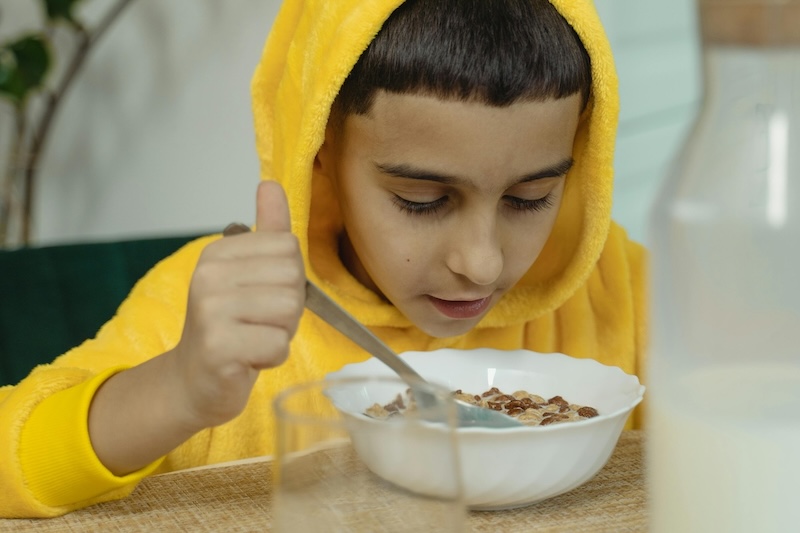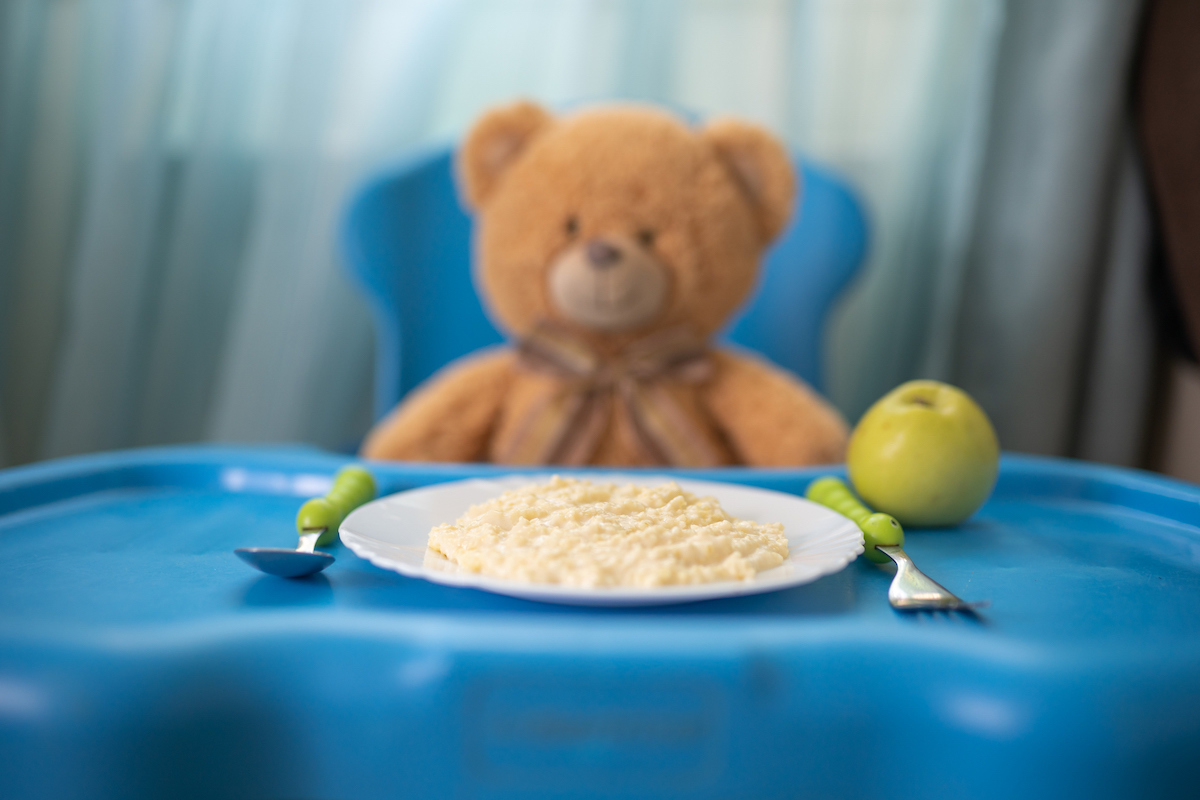Picky eating is one of the more frustrating aspects of parenting. This is partly because it can sneak up on us — many babies are wide consumers of food, and most toddlers are not. This happens for evolutionary reasons (once children are walking around out of your sight, you want them to be more discerning about what they put in their mouth), but knowing that doesn’t make it less frustrating when your asparagus-loving baby turns into a pizza-only toddler.
The truth is that some picky eating is almost universal, and it’s a rare child who doesn’t go through some form of this phase. But some are more extreme than others, and this article will dive into what the data says about how worried you should be and what you might do to combat it.

I will say at the outset: This is a piece focused largely on what we’d see as standard, I-only-want-pasta-and-carbs-and-white-food picky eating. I will not focus on eating patterns that truly put kids at risk of undernourishment. Children can become malnourished if they are not consuming enough overall calories, and there is a diagnosable condition called ARFID. This is something your child would be seen by a pediatrician for, and it would be managed medically.
Here, I’ll dig into the basic, everyday world of your kid only wanting nuggets (or buttered pasta, toast, or … you get the idea) for all of their meals.
First, decide how much you really care about this
Before we get into the data, you should start by asking whether this is important to you or whether you care about it. The vast majority of kids, even if they eat a very, very limited set of foods, will get enough calories and vitamins.
For some people, picky eating feels like a problem. But getting their kid to not be a picky eater may not be important to everyone. You may care that your child is willing to eat some vegetables, but you may not particularly care if they eat different ones. There is nothing wrong with a child who eats only broccoli and pasta, as long as that works for your family.
Going further, you may not care if the child eats only pasta, figuring they’ll get into broccoli when they grow up. If the diet is extremely limited, you might need a multivitamin. Some dietary patterns may contribute to constipation (especially if your child does not consume any fiber). But this is treatable, and other than these issues, picky eating is not obviously a problem. So ask yourself first: Is this a problem you want to engage with now? If yes, read on.
What makes a healthy diet?
Let’s imagine that you do care about promoting a particular diet. Usually, people try to promote what is seen as a “healthy diet” — one with lots of fruit and vegetables. Question: How can you get your kid to eat like this? The good news is that there is plenty of research on the question. The bad news is that much of it is not very methodologically sound.
Consider a paper from 2017 that got a great deal of media attention. The authors followed 911 children from the age of nine months to 6 years and related their early diet to their later diet. They found that children who ate a varied diet at nine months — and in particular, those who consumed a wide variety of fruits and vegetables — were also more likely to eat a varied diet with vegetables at age 6.
The researchers concluded that tastes are formed early and that it is, therefore, important to expose children to a variety of foods early in life.
This is certainly one possible explanation for the results. But it is by no means the most likely one. A much more plausible explanation is that the kind of people who feed their children vegetables at age 1 are also likely to feed them vegetables at age 6. This is just a very basic causality problem, and it is difficult to learn anything here.
However, we can get some clues about the true underlying relationships from smaller, more indirect studies.
Consider the following quite neat example. Researchers recruited a group of mothers and randomized them into a “high-carrot” or “low-carrot” diet during pregnancy and lactation. The high-carrot moms were drinking a lot of carrot juice.
When the babies were ready to start solids, the researchers offered them a rice cereal made with water or one flavored with carrots. Those whose moms had eaten more carrots were more likely to prefer the carrot cereal (as evidenced by their consumption and their facial expressions and presumably also whether they picked up the dish and threw it on the floor or not). This suggests that flavor exposure — in this case, through the placenta and breast milk — affects whether children are receptive to new flavors.
Related to this, once children start eating solid foods, there is randomized evidence that repeated exposure to a food — say, giving kids pears every day for a week — increases their liking of it. This works for fruits but also for vegetables, even bitter ones. It reinforces the idea that children can get used to different flavors and that they like familiar ones.
This shouldn’t be too surprising. People eat differently in different cultures, and we know that people continue to express preferences for the foods they ate as a child, even if they move to another location.
So, on the one hand, from a global public health perspective, I would be extremely hesitant to conclude that a lack of exposure to vegetables at age 1 was the problem with older children’s diets. The problem was much more likely to be with the foods kids were offered at both ages. On the other hand, from the standpoint of an individual parent, if you want your child to eat a variety of foods, this suggests that it is beneficial to expose them — repeatedly — to these flavors.
My kid is a picky eater. Now what?
First of all, do not beat yourself up. Even if you eat all kinds of weird stuff while breastfeeding and carefully expose your child to brussels sprouts for weeks on end, they may still end up being somewhat picky about their food. There is some evidence from twins suggesting that a large share of pickiness is actually genetic. So it’s your “fault” only in the genetic sense, not the behavioral sense.
Researchers classify pickiness into two groups: food neophobia (fear of new foods) and picky/fussy eating, in which the child just doesn’t like many different foods.
As I mentioned at the top, nearly all kids become more picky around 18 months or 2 years, and they grow out of it later. This change is often a surprise to parents, and it can lead to unrealistic expectations from parents about how much their toddler and young child will eat. As a review article from 2012 notes, “The majority of children between one and five years of age who are brought in by their parents for refusing to eat are healthy and have an appetite that is appropriate for their age and growth rate.” The article goes on to note that the most useful treatment for this problem is parental counseling, not anything to do with the child. (Thanks for the judgment, researchers.)
This suggests that even if your child doesn’t eat that much some of the time, you probably shouldn’t be overly concerned, but it doesn’t answer the question of how you can treat or avoid general pickiness. This is a topic of some research interest. One study I like a lot followed 60 families of kids ages 12 to 36 months as they tried introducing a new food. The families videotaped their dinner interactions for a night so researchers could study what seemed to influence the new food adoption.
This study reported what parents actually do rather than what they say they do. This is good since none of us are especially good at reporting our actual behavior. The primary finding relates to how parents talk about the new food. Kids are more likely to try and eat food with what researchers call “autonomy-supportive prompts,” such as “Try your hot dog” or “Prunes are like big raisins, so you might like them.” In contrast, they are less likely to try things if parents use “coercive-controlling prompts” like “If you finish your pasta, you can have ice cream” or “If you won’t eat, I’m taking away your iPad!”
Other studies show that parental pressure to try new foods or to eat in general is associated with more food refusal, not less. The study also shows that food refusals are more common in families where parents offer an alternative or substitute meal. That is, if your kid doesn’t eat broccoli and then you offer him chicken nuggets instead, he may learn that this is always the reward for not eating new foods. This problem is exacerbated by parents’ concern that their child isn’t eating enough (which, see above, is probably not true). Substituting foods is not the same thing as putting several different foods on their plate for them to choose from, which can be a helpful approach for picky eaters.
Putting this together leads to some general advice: Offer your very young child a wide variety of foods, and keep offering them even if the child rejects them at first. As they get a little older, do not freak out if they don’t eat as much as you expect, and keep offering them new and varied foods. If they won’t eat the new foods, don’t replace the foods with something else that they do like or will eat. And don’t use threats or rewards to coerce them to eat.
Closing thoughts
All of the above advice is easy to give, but it can be hard to put into practice. It is frustrating to sit at a meal that you know to be delicious with a 4-year-old who screams that they hate it and will not eat anything. I don’t have a great solution for this, other than earplugs. Oh, or try this: When my younger child was 4, I trained him to say, “I don’t care for pot roast” rather than “I hate pot roast,” since it at least sounds more polite, even if still combined with pushing the plate away and putting on an angry pouty face. (Parenting: It’s a long game.)
The bottom line
- Picky eating is extremely common. Many kids become more picky around 18 months or 2 years, and they grow out of it later. The vast majority of kids, even if they eat a very limited set of foods, will get enough calories and vitamins.
- There is some evidence to suggest that diet while pregnant and breastfeeding could influence a child’s later food preferences. Related to this, once children start to eat solid foods, studies suggest that repeated exposure to a food increases their liking of it.
- Parental behavior is often the most important aspect of curbing your child’s picky eating habits. Parental pressure to try new foods or to eat in general is associated with more food refusal, not less, and food refusals are more common in families where parents offer an alternative meal.
















Log in
Genetic? Why does only one of my identical twins survive thanks to cheese pizza. I’m half kidding. Thanks for the reassurance
just sharing our experience in case anyone is in the same boat – our oldest got increasingly picky (combined with refusing to eat anything at all when he was sick) at age 2, and didn’t gain any weight for about three years. We drove ourselves crazy following the advice and watching him fall further and further off his growth curve. Turns out he’s autistic and needed a different approach. The advice summarised above worked great for his neurotypical little sister (who loves sushi and salad at age three), but I think that trying so hard to follow that advice with him kept us from treating the fussy eating as an early symptom of his autism. So if you’re trying the above and it’s not working, it may be because something else is going on.
I get that the research shows people like the foods their grew up with, but I also like to keep in mind the many many many new and delicious things that I’ve grown to love as an adult and never ate as a child. It really doesn’t matter that much that a toddler doesn’t want to eat brussel sprouts, they will realize how delicious they are in the future!
It does help them learn to like a food if you keep offering it and they keep tasting it (we’ve seen this work with our 4 year old and broccoli). However, the hard part often isn’t getting them to like it, it’s getting them to try it at all.
Feeding therapists say that just having a new food on their plate makes them more likely to try it. Just keep putting the broccoli out there and let the kiddo get used to it. Surprisingly effective.
I have a question regarding the last part/advice about not offering alternatives. Do you suggest offering a new ‘entree’ (with no other ‘side items’) and if they don’t want it, they just….don’t have dinner that night? Or do you suggest offering a dinner of 2-3 items (which we usually do), with one of them being new. Then, if they don’t want the new one, let them have the other ones (or will that still signal as this ‘alternative’ method to them?) This is hard to word but I hope you get what I’m trying to ask. Thanks!
This last point stuck out to me as well. I have seem some varied recommendations, including having a standard “simple substitute”. I think it probably works best if the substitute option is not the kid’s favorite food, but something they usually are willing to eat. A second criteria (for your sanity) is that it is easy to prepare. In the example I am remembering, it was a cheese sandwich, but PB &J or other basic food works too. I haven’t found too many other people suggesting the “if they don’t want it, they don’t eat” course of action. I have seen a lot of advice advocating what you are doing, a meal with multiple options, including something new. It is a long game! I have a 7 year old who went from favorite foods of mashed avocados and black beans mixed in applesauce at 24-36 months, to now Annie’s (at least it’s not Kraft…) Mac n Cheese and PB&J (but only on a slider bun…). It’s ups and downs though!
I have worked with Ashley from Veggies and Virtues. She uses the division of responsibility which works for us but like this example it requires thought. We always offer a “safe food” so if it’s one pot we offer 2-3 sides. Mixed foods and sauces are hard for my kids. I sometimes pull out ingredients raw or before combining to avoid more work for myself. The mixed food is all I have for seconds then due to combining the meal for myself. She teaches a “love it, like it, learning it” method. You make a list based on her advice and then you rotate. So for sides on a lasagna I would not offer deconstructed zucchini as that is also a learning it food. I would offer maybe cherry tomato’s as they take no prep and are nutritionally similar. Chili I would maybe pull out ingredients raw as I was preparing like corn or beans etc. when I can’t come up with a simple fat or protein that’s safe I may serve milk. If my kids don’t want to eat the safe food – and the love it food is fruit (cucumbers etc) they may be hungry but they won’t be starving to the point of tears. We offer snacks as mini meals – so also 2-3 options minimum if it’s not a quick on the go “love it” apple. This means a small dinner they chose sides than they know they have milk before bedtime and something like plain Cheerios. We have worked to drop night time snack but it helps them eat more variety knowing they have milk and an apple or Cheerios in 3 hours just in case. Her blog is great, on IG, the podcast she did a year was awesome!
I like the advice others are giving you. My only addition would be that if the “reward” food is something you want your kids to eat it’s not a bad thing. There’s a difference between offering an apple and offering cake. And I’m not sure I’d this will be helpful or not, but I’m a foster parent and when we took in an actually malnourished toddler and his likely autistic picky eater brother it really put our concerns about other children into perspective. For that situation, our therapist said to let the 9yo eat ice cream for breakfast if that’s what he wants because he heads to feel secure and we need to build trust, the nutrition will come later. It was a hard mind shift because we want so very much to do the best for our kids and with all the pressure to feed nutritious foods and build better habits than we had it felt like neglect, but then I’d hear other stories or him on the phone with his dad… my thinking is if you are concerned enough about your kid’s eating to be reading this, you are probably doing a great job. Three foods at once is probably a better way to offer an alternative, but offering a food after is also going to be okay. None of this is going to less to the long term food trauma and avoidance you might be worried about. Coming from someone who was in years when our toddler wouldn’t drink out of a 360 cup so I was considering a transition cup on the advice of daycare, which was against the advice of my speech pathologist friend, I had to get over the idea of perfection. Taking in a 15-month who was only fed apple sauce and milk really clarified that. We got him to stop the bottle the first night (using a transition cup), walking within a week, and eating solids went from two hours to eat half a chicken nugget to three chicken nuggets in a sitting in a few weeks. I’m not sure if this is helpful to you or anyone else out there, but you might not know what a good job you’re doing, so hopefully knowing the extreme that causes actual malnourishment might help you breathe relief too.